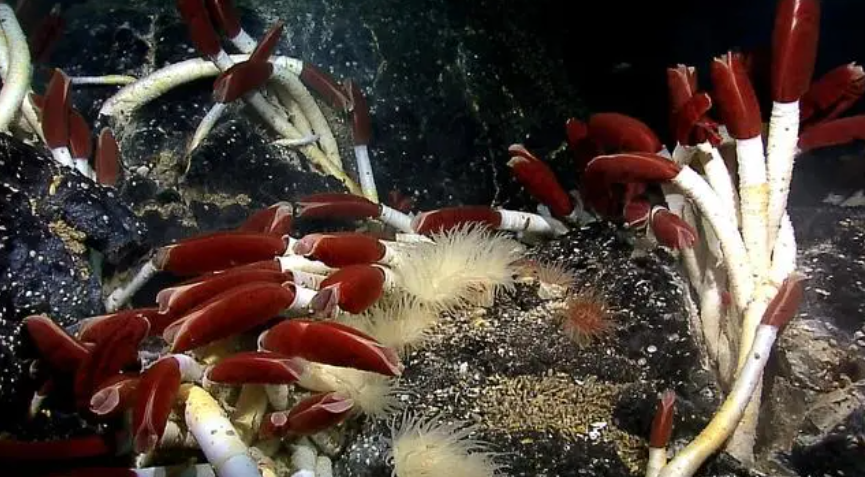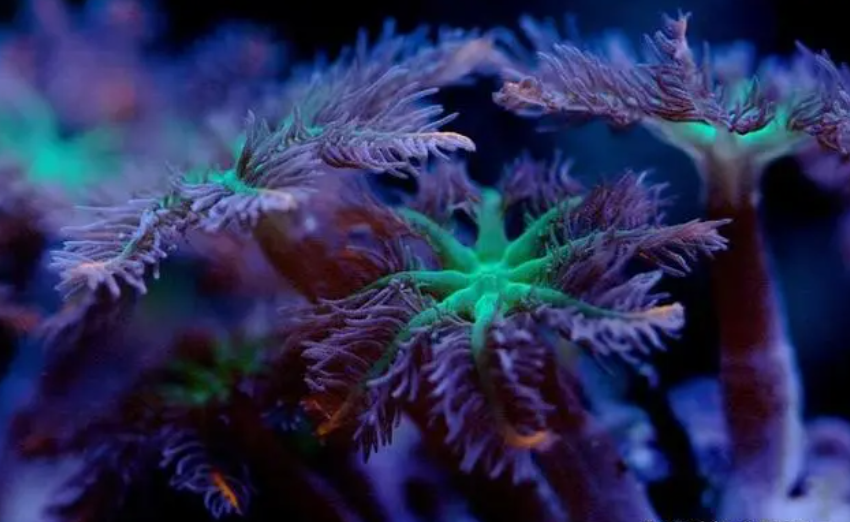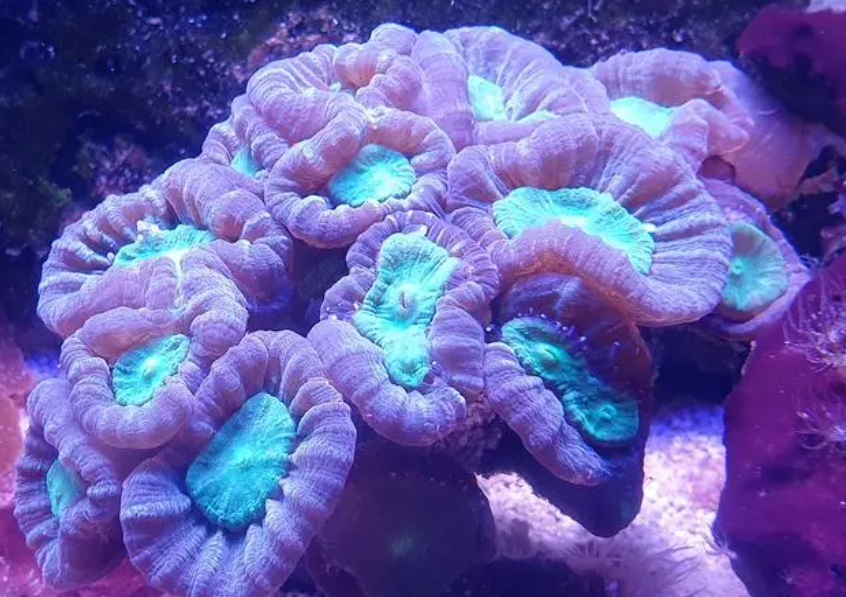Corals are usually divided into several types, such as large corals, small corals, soft corals and anemones. It should be noted that corals are animals, not plants. Corals not only resemble plants in shape, but also have bright and colorful colors. Did you know? Some corals have a very colorful appearance. This article will introduce you to the ten most beautiful corals in the world, including the following varieties: Christmas tree worms, bubble corals, eight-shaped brain corals, cup corals, leather mushroom corals, finger corals, tube worms, tiger ear mushrooms, clove water polyps and large flower brain corals. These corals are well-known in the marine life world for their unique appearance and amazing beauty.
- Christmas tree worms

Christmas tree worms are a type of tube worms. They have two charming tentacles that resemble Christmas trees, hence the name. These tentacles are actually their feeding organs, which are very sensitive and can react immediately even to slight shadows. These charming Christmas tree worms are presented in a variety of colors, including yellow, orange, blue and white, which are beautiful and have become one of the important features for people to find Christmas tree worms. Christmas tree worms are widely distributed in tropical oceans around the world and mainly feed on zooplankton.
- Bubble Coral

Bubble coral, scientific name Plerogyra sinuosa, belongs to the soft coral family. They are distributed along the coasts of the Pacific, Atlantic and Caribbean Seas, and live in waters within 30 meters of depth. This type of coral has unique characteristics: bubble corals are very beautiful, and they need light to expand and expand. When unfolded during the day, the corals appear in the shape of bubbles in white, purple, yellow and other colors, looking like shiny and transparent bubbles, pearls or grapes. When they are inactive, you can see that they have a hard skeleton, and it is because of this characteristic that bubble corals are named after their appearance.
- Figure-8 Brain Coral

Figure-8 Brain Coral, also known as Open Brain Coral, is the most common and very tenacious coral variety in aquariums. They usually show a variety of brilliant colors, including green or red fluorescence, or staggered and intertwined colors. In addition, they also present a variety of charming colors such as brown, pink and even blue. Initially, their skeletons are conical, but as they grow, their shape gradually reveals a structure similar to the number “8”, hence the name Figure-8 Brain Coral.
- Cup coral

Cup coral is one of the fascinating corals from the deep sea. Unlike other corals, cup corals do not attach to coral reefs, but rely on plankton for survival. At night, they extend their translucent tentacles, showing their unique beauty. As a treasure in the ocean, cup corals are renowned for their bright colors and special shapes, common shapes include cups and plates.
- Leather mushroom coral

Leather mushroom coral, belonging to the family of soft corals, is also known as green toadstool coral, umbrella coral or elephant ear leather coral. Like other corals, leather mushroom corals show a variety of colors, ranging from brown to cream to deep red. This charming mushroom coral looks like a piece of soft leather folded up, and at night or when foraging, they extend their pedicel-like tentacles. They form a colony of marine animals, and marine organisms provide them with the nutrients they need.
- Finger coral

Finger coral, also known as soft finger coral, is distributed in the waters of about 10 meters from the Red Sea to the Pacific Ocean. This coral belongs to the coral mollusk class, Ascidian order. The scientific name of finger coral is Sinularia asterolobata. The colony often appears ivory or light gray, with thick fleshy feet growing upward to form the body, and the end is a blunt finger-like fork.
- Tube worms

Tube worms, also known as tube-dwelling worms, are large animals that can reach 1-2 meters in length and several centimeters in diameter. They have a red fleshy head at the top and a straight white tube at the bottom, hence the name tube worms, which makes them look like white-stemmed red flowers in giant flowers. Tube worms rely on symbiotic sulfide-oxidizing bacteria in their bodies to provide them with nutrition, so they have neither internal organs nor digestive tracts. Scientists estimate that tube worms are likely to be one of the longest-lived animals on Earth, and some individuals may have lived to 250 years old.
- Tiger ear mushroom coral

Tiger ear mushroom coral, like the paint in a painter’s palette, displays colorful colors in the ocean, including red, orange, purple and green. Among them, the red tiger ear mushroom is particularly rare and the most precious. Different colors of tiger ear mushrooms require different care. As a type of mushroom coral, the green tiger ear mushroom has spots on its surface, showing a vibrant green color.
- Clove water polyp

Clove water polyp, also known as glove polyp, is a member of the polyp coral family. These charming polyps are widely distributed in the Indian and Pacific Oceans and come in a variety of colors such as brown, red, pink, white and green. Smaller polyps are usually classified as clove water polyps, while larger ones are generally called glove polyps. Regardless of size, they have eight tentacles. These polyps rely on iodine, mysid shrimp, planktonic microorganisms and trace elements for survival. They usually form groups and require medium-intensity light. They can reproduce and grow rapidly on coral reefs and rocks.
- Big flower brain coral

Big flower brain coral is a colorful coral with a variety of colors including gray-green, reddish brown, light blue, etc., and its shape resembles a human brain. They are mainly distributed on the surface of reefs, and some grow on muddy or pebble ground 40 meters underwater. These corals feed on plankton.
The list of the most beautiful corals in the world is mainly compiled based on relevant websites, sorting out the appearance characteristics and colors of the relevant corals, and ranking and recommending them based on the network attention and popularity of the relevant corals. The ranking is for reference only. If you have any questions, please comment/criticize at the end.
